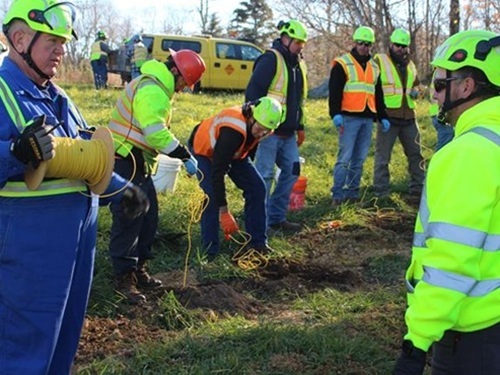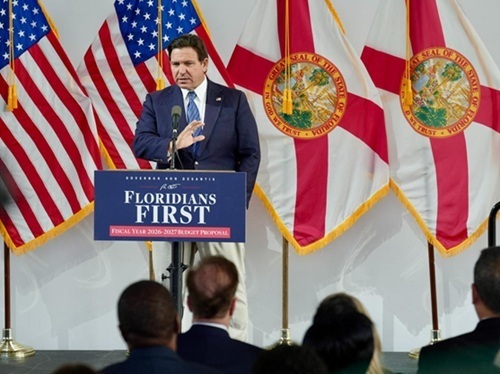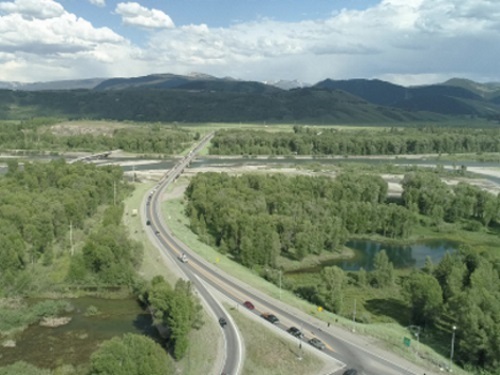The Wyoming Department of Transportation recently received a 2022 Environmental Excellence Award in the category of Ecosystems, Habitat, and Wildlife from the Federal Highway Administration for its role in the Snake River Bridge reconstruction and wildlife crossing integration project.
[Above photo by the Wyoming DOT]
The award is one of 14 conferred by FHWA nationwide in a variety of environmental categories.
Wyoming DOT – along with the Wyoming Game and Fish agency, Teton County, and other community organizations – designed a project for the replacement of a critical bridge on Wyoming Highway 22 over the Snake River, near Jackson, and expanded it to accommodate local and migrating wildlife within the Greater Yellowstone National Park ecosystem.
FHWA cited Wyoming DOT’s “exemplary achievement” and “extensive stakeholder collaboration, community engagement, and environmental considerations” in granting the award.

The wildlife underpasses and three additional wildlife crossings built by this project should provide for “safer movements” especially for large animals such as moose, elk, and deer, Wyoming DOT noted.
The agency is also implementing additional improvements that will enhance recreation and natural resource education in the nearby Rendezvous Park with work that will include increasing wetlands along ponds, constructing a boardwalk, and making a swimming hole deeper.
Construction on this project should begin in the spring of 2023, Wyoming DOT said.
This follows a joint effort by Wyoming DOT and the Wyoming Game and Fish agency launched in 2019 that committed a combined $2.5 million toward installing wildlife crossings along US 189 in southwest Wyoming – known as the “Dry Piney” project – to help reduce wildlife-vehicle collisions.

The purpose of the improvements is to support positive public interaction with the natural environment while addressing the needs of the ecosystem, noted Wyoming DOT Director Luke Reiner in a statement.
“We appreciate the recognition and affirmation from the FHWA that this is a special project that will benefit not just the transportation of motorists but of wildlife, too,” said WYDOT director Luke Reiner. “I am grateful to our partners who were instrumental in shaping this project into an award-winning success.”
State departments of transportation in many parts of the country are working to improve wildlife crossings across a variety of transportation projects.
For example, the Colorado Department of Transportation and the Colorado Parks and Wildlife agencies completed wildlife underpasses along a rural stretch of Interstate 25 between Colorado’s two largest cities, Denver and Colorado Springs, in October 2021.
That wildlife mitigation system is part of a $419 million transportation improvement project – known as the I-25 South Gap project – that aims to improve safety and travel on 18 miles of I-25 south of the Denver metropolitan region; a route that more than 87,000 motorists use on a daily basis.
In February, the Nevada Department of Transportation began closing stretches of U.S. 50 between State Route 341 and Chaves Road in Dayton, NV, to install high livestock fencing on both sides of the highway largely along rural roadway stretches to reduce vehicle-horse collisions.
The Nevada DOT is also placing roadway lighting on the highway at the end of each fenced section for enhanced visibility for motorists.
In addition, in April, the Oregon Department of Transportation recently received a special one-time allocation of $7 million in general funds from the Oregon legislature to invest in wildlife corridor projects statewide.
The Oregon DOT said it has had “great success” with wildlife undercrossing structures in recent years, with five crossings built to date in the state, all on U.S. 97, leading to an 86 percent reduction in wildlife-vehicle collisions.
 States
States
NCDOT Staff Participate in ‘Explosive’ Technical Training
December 19, 2025 States
States

